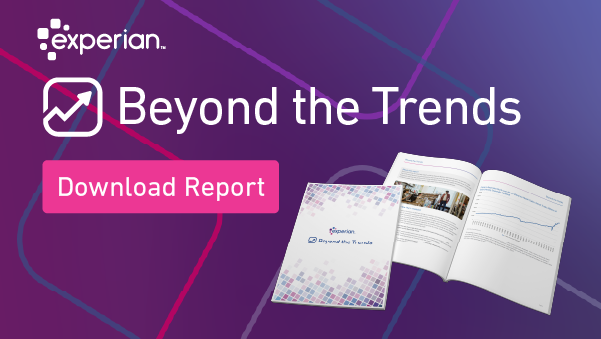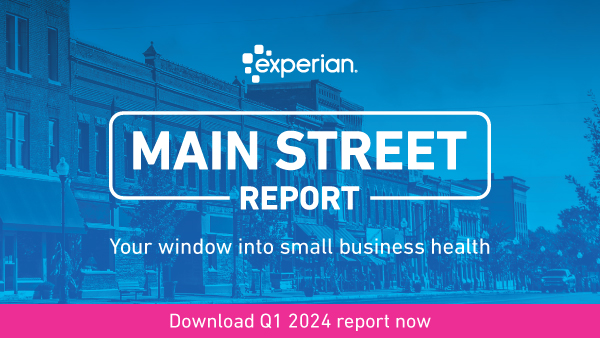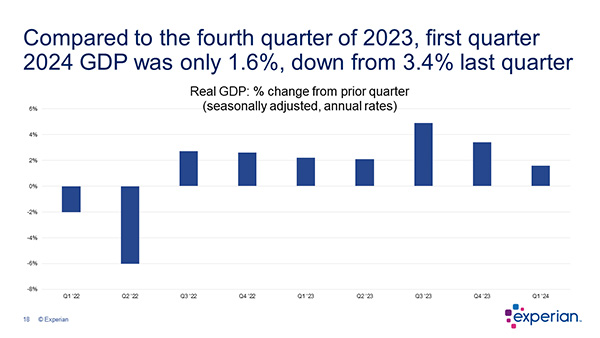Effective marketing strategies for insurance agents and brokers to boost ROI and client engagement.
One of the key questions we often explore is how to maximize the ROI of marketing campaigns and effectively target specific business niches. In this Experian Business Chat, we dive into the challenges that commercial insurance agents and brokers face as they try to launch successful marketing strategies in an ever-evolving digital landscape.
Joining me in this discussion are two of Experian’s top experts. Dan Mullooly, our Director of Product Management, manages the strategy and roadmap for the Commercial Insurance Vertical. Accompanying him is Tony Romero, a Senior Product Manager with a rich background in developing our marketing solutions.
Watch Our Business Chat Interview
Subscribe To Our YouTube Channel
Experian experts talk about solutions to help insurers jump-start their marketing
In our business chat, Dan introduced the Rapid Growth SMB Bundle, a new offering designed specifically for brokers and agents grappling with outdated marketing tools. This bundle is crafted to rejuvenate their marketing efforts and deliver the results they’re looking for.
Dan shared that the bundle was inspired by common issues within the insurance space, as reported by clients. These challenges include difficulties in executing high-performing marketing campaigns due to inadequate or stale data and a lack of effective data usage and analytics in their campaign strategies.
He pointed out that brokers or agents who incorporate data and analytics into their campaigns see notable success, especially in personalization and targeted marketing, which significantly boosts lead conversion rates. Dan also emphasized the advantages of focusing on existing clients for easier and more profitable upselling, which can be up to twelve times more likely to secure new business from an existing client than from a new prospect.
Dan also explained how the bundle addresses these issues by refining audience targeting, enhancing message reception, and identifying the optimal risks for clients' specific needs. He highlighted the importance of a multi-channel marketing approach, integrating direct mail with digital strategies like email campaigns to improve reach and conversion rates.
Tony then took over to detail the three tiers of the Rapid Growth SMB Bundle—Essentials, Intermediate, and Advanced. Each tier is designed to cater to different levels of client sophistication and marketing needs, from enriching lead data to advanced analytics and segmentation.
Tony also outlined the unique aspects of Experian's offerings, including our comprehensive data capabilities that provide a 360-degree view of prospects, our superior small business database, and the rapid deployment of tailored marketing strategies.
" We can help by really helping to hone in on some of those audiences you're truly after, to make sure that your messaging is well received, and also make sure that we're identifying the best risks for your particular appetite." Dan Mullooly, Dir. Product ManagementExperian
If the Rapid Growth SMB Bundle sounds like something that could benefit your business, I encourage you to contact your Experian Commercial Insurance Account Executive to start tailoring a strategy that fits your needs.
What follows below is a lightly edited transcript of our discussion:
Gary Stockton: Hello everyone and welcome to Business Chat. Today's conversation focuses on challenges faced by commercial agents and brokers to quickly deploy successful marketing strategies as the digital landscape continues to evolve. Are you challenged to maximize the ROI of your current marketing campaigns? Is it difficult for you to target business niches based on granular demographics? I'm joined by two of our experts. Dan Mallooly is the Director of Product Management who manages our strategy and roadmap for the Commercial Insurance Vertical. Dan is joined by Tony Romero, a senior product manager with Experian, who has an extensive background in developing our marketing solutions.Gentlemen, welcome.
Gary Stockton: Dan and Tony, we just introduced a new bundle offering called Rapid Growth SMB Bundle. Who do we have in mind when we made the decision to bundle a set of solutions?
Dan Mullooly: So the primary audience we're trying to help here are brokers and agents who have been using outdated solutions that are no longer getting them to the results they want. So, we really tried to cater this bundled offering to that particular audience.
Gary Stockton: Can you talk about what we see in the insurance space that led us to create the bundle?
Dan Mullooly: The clients that we've spoken with have expressed a few common challenges across the board. One of them is being able to execute high-performing marketing campaigns. And they've expressed some issues with things like not having enough data or, I should say, inadequate data. Also, the data that they have might become stale. So, they might not be reaching out to the right contact information that they once had for a particular customer.
The other thing that we hear is that there's a lack of data and analytics within the process of running their marketing campaigns. So, they don't have a good understanding of whether or not a campaign is working or not working. And so we really try to help them with understanding through our solutions, help them understand how they could overcome some of these challenges and get a better return of a better ROI from some of the solutions we can help to offer.
Gary Stockton: So, what market insights are you following related to the space's winners and how they use data and analytics?
Dan Mullooly: First and foremost, I'd say those brokers or agents who embrace data and analytics within their campaigns to do things like further personalization or target specific segments. We see a sense of success, which typically leads to a significant increase in lead conversion rates for these campaigns.
We also see opportunities for some of our customers to look at the existing book that they have before they go out and try to prospect for new businesses and really look inside that book and say, Hey, where can I have a meaningful impact on some of the customers I already have? It's well known that selling to an existing customer is much easier than selling to a new prospect.
From some of the analyses we've seen, we see that this trend could be anywhere from three to twelve times more likely to win over new business from an existing client than from a prospect. So, our solutions are geared to help with some of these key insights and trends that we're seeing in the marketplace. Tony will talk about those in a little bit.
Gary Stockton: Can you describe some of the problems clients face that are being addressed with these bundled solutions?
Dan Mullooly: There's a lot of competition in the market, first and foremost. We see many of our clients trying to capture the same audiences. They're trying to go after those good risks. On the backend, we see areas where there's just not enough differentiation within their marketing efforts. We can help by really helping to hone in on some of those audiences you're truly after, to make sure that your messaging is well received, and also make sure that we're identifying the best risks for your particular appetite.
Second, we see agents and brokers who are just using traditional methods, which are not having the profound impact that they might have once had within the industry. We see things like just using direct mailers, and really, you have to go beyond just doing that; it's not enough for today's landscape.
So, there are additive ways that we can help with solutions, such as combining your direct mail with maybe an email campaign. When you do this, you're trying to have multiple touchpoints with customers that you're targeting.
And then lastly is just really helping to enable more of a digital strategy for marketing efforts. Again, going back to the direct mail, if you're just going the direct mail route and you don't have a digital strategy, you will have a difficult time reaching the audiences and having better conversion rates.
What's the takeaway from here? Consistently delivering your messages across multiple channels will help you in 2024 and beyond as the marketing landscape evolves.
Gary Stockton: Tony, tell me more about the new Rapid Growth SMB bundle for insurance.
Tony Romero: When Dan came to me with the needs and concerns of the carriers, agents and brokers, we sat down and collaborated on a very focused bundle. And these options were designed to effectively maximize our client's marketing budget across their customer life cycle or across their levels of sophistication. Overall, we have a very comprehensive marketing toolkit. But we want it to be very focused. And so, we defined essential options, intermediate and advanced.
Gary Stockton: What does each of the options include? Can you go into a further detail?
Tony Romero: Yes. Before I do, I just wanted to mention that we view ourselves as marketing advisors, trusted consultants who help identify the right marketing strategy for our clients. What's the right data to be used? What are the right services to be utilized? What's the timing?
So all of that comes together to help our clients truly maximize their campaigns. So, with these options, we have the essential package, which, as Dan mentioned, is focused on existing client bases. So, our clients who want to upsell or cross sell to their existing customer base, this is the right package here, and it includes our lead list, which includes over 17 million verified business records with contacts. As Dan mentioned, some of our clients have stale data. First and foremost, you want to be able to make sure that data is correct and current. So our lead list can help to ensure that we're filling in the gaps where any data is missing or to fix stale or incorrect data.
Secondly, we have our consumer-to-business linkage capability, which is where our clients can look at their consumer customer base and identify individuals who are also involved with a business and be able to promote business products to those individuals who have businesses. Lastly, to Dan's point, we can provide email capabilities to provide a multi-channel marketing approach.
This includes not only providing business emails and or consumer emails, but we can also act as an agency where we're helping to develop creative. We can deploy an email campaign. We can track the level of engagement and conversions on emails. So, we can provide the full gamut in order to create those multi touch points.
Now, along with this, we can provide analytic services. This is for both the essential and the intermediate packages. So we can start by doing simple profiling or segmentation, which is identifying certain key attributes on which you might want to focus a marketing campaign.
So that could be certain industries. It could be geo-location. It could be the company size or revenue, whatever elements you want to add to a profile, and we can do that to identify the right prospects to go market to. Secondly, we can also do what's called a lookalike analysis, which is another step further. With lookalike analysis, you're looking at your existing customer base. You identify who are the ideal customers. What are their attributes? Why did they convert? Being able to use those levels of attributes to identify a marketing or prospect list that has similar attributes to be promoted certainly leads to higher conversion rates.
Next is the intermediate option, and that's now where a client may focus instead of focusing on marketing towards their existing client base, now they want to look outside the four walls or out to the open market and doing more of a true prospecting. And so here's where the intermediate package plays in.
We provide on top of the essential package, we provide, lead enrichment. We can provide data hygiene to ensure that all of the data that we're prospecting to is the most current and accurate. In addition, we also can provide an omni-channel marketing approach. And this is where instead of having a disjointed direct mail and a disjointed email, marketing campaign, we really combine this now into more of a unified marketing campaign where you're making sure that the timing, the messaging, the call to action is unified between a direct mail piece, email and or social media altogether combined and tracking the, the conversions and the engagement rates to make sure that you can learn from it for the next round of marketing.
And lastly, we have our advanced option. The advanced option now brings in a higher level of a data-driven set of strategies. For example, we can do higher levels of segmentation, we can do prescreen and prequalification campaigns that either use just commercial data alone or commercial and consumer data together to provide a blended prescreen prequal approach. We also have Diversity and Equity Indicators to identify minority-led businesses or women-led businesses. So that's another element we can provide. On the analytics side, our commercial data scientist team can provide very predictive response models that can provide yet another level of targeting for marketing campaigns.
Gary Stockton: So what's unique about the Experian offering?
Tony Romero: Yeah, I'd say the way to frame this is that the depth, breadth, and accuracy of our data is unique to what we can offer here. First, I'll say that the best way to say this is a 360 view of our prospects. We can use demographic, firmographic, and risk data all together to hone in on who the right prospects are to go after and suppress the businesses that have high risk or don't fit the right profile. So, there's a lot that we can do to do with segmenting there. Also, I'll say we have a superior small business database. Our capability to identify micro businesses may not have a file at all or it's a thin file. We can still identify that, these, opportunities or prospects are worth marketing to.
And, it goes beyond what most other vendors have capability to do.We also provide affordable and rapid deployment with a very data-driven refinement of our solutions. For example, once we've defined a strategy, we can deploy it within five business days. The way I like to describe our capability is again as a consultant to make it easy for our clients to define what their strategies need to be, to define what their campaigns need to look like and to measure the results of those campaigns then.
Gary Stockton: It sounds like the suite of solutions you've put here, and the options you've given to agents and brokers will get them a lot faster.
Dan Mullooly: Absolutely.
Tony Romero: Yeah, couldn't agree more. Ease of use, being able to do rapid deployment, we're here to help. And again, we can tailor our solutions accordingly for every client.
Gary Stockton: Excellent stuff. Dan, Tony, thanks so much for coming on Business Chat. You've given us a lot to think about. If the Rapid Growth SMB Bundle sounds like something that you would like to explore, please reach out to your Experian Commercial Insurance Account Executive to start a conversation. Thanks for watching everyone.
Learn more about advanced marketing solutions for insurers
Related Posts


















